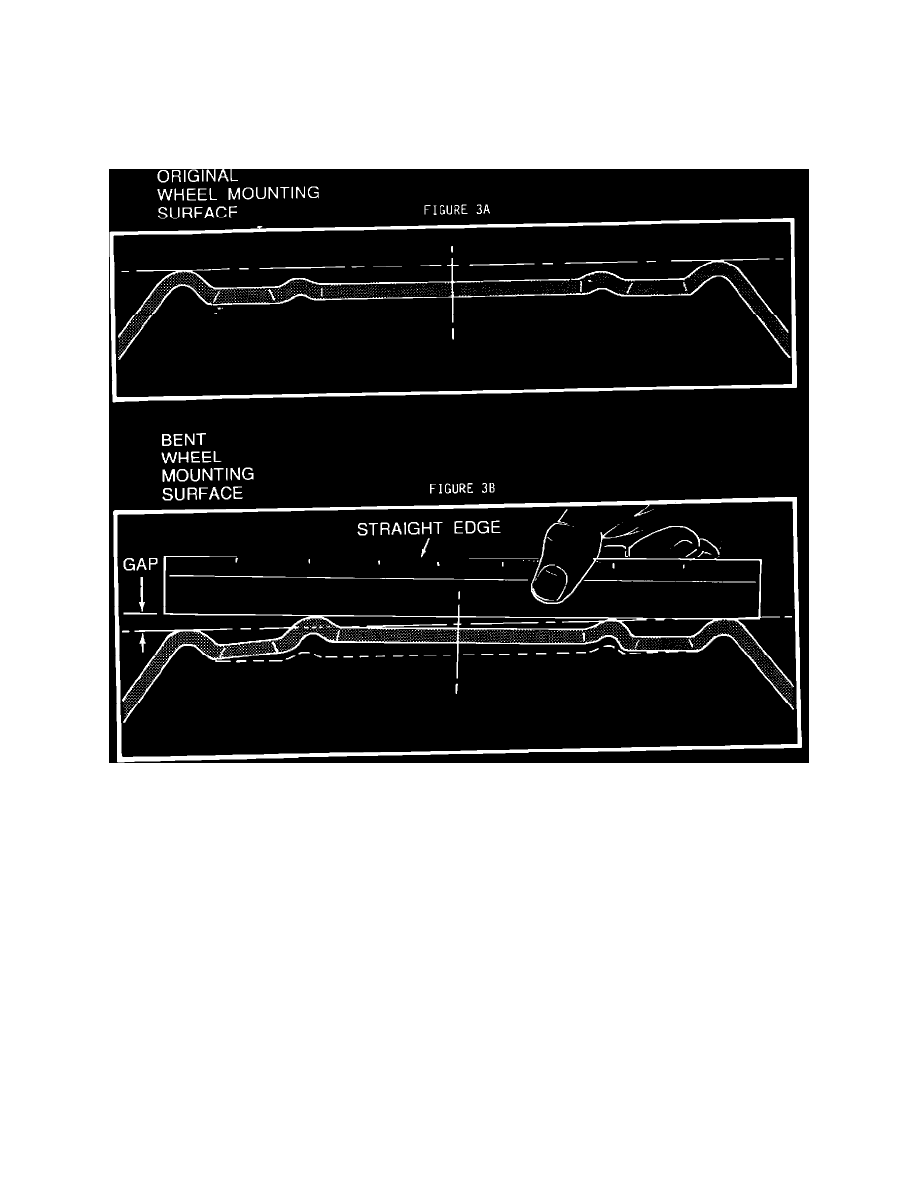Suburban 3/4 Ton 4WD V8-305 5.0L (1986)

MOUNTING SURFACE CHECKING PROCEDURE
A.
Obtain a straight edge approximately 8-9 inches long and, while holding it in two hands, as shown in the illustration (Figure 1), place it on the
inboard mounting surface of the wheel and try to rock it up and down.
B.
Repeat the above procedure on three or four different positions on the wheel inboard mounting surface.
C.
The outer ring of the mounting surface is normally raised above everything inside it. If a wheel mounting surface has been bent on a tire
changer, it will be raised above the outer ring and the straight edge will rock on this "raised" portion (Figures 3A and 3B).
D.
If a bent wheel is found, it must be replaced.
2.
OVER TORQUING OF THE WHEEL NUTS
A.
A TORQUE WRENCH MUST BE USED to insure that the wheel nuts are tightened to specification. This should be done, in two steps using
the star pattern. First, snug the nuts down by hand. Then, using the star pattern and a torque wrench, tighten the wheel nuts to about half the
final torque. Finally, tighten the wheel nuts to specification using the star pattern and a torque wrench.
B.
NEVER use lubricants or penetrating fluids on wheel studs, nuts, or mounting surfaces, as this can raise the actual torque on the nut without a
corresponding torque reading on the wrench. Wheel nuts, studs, and mounting surfaces must be clean and dry.
